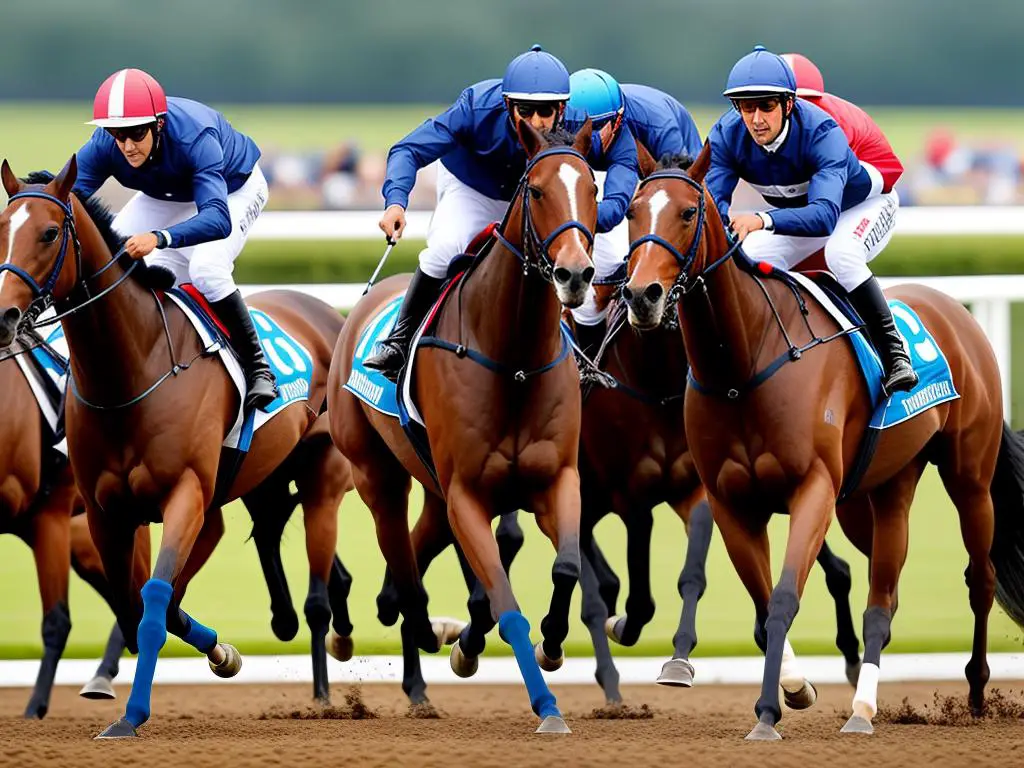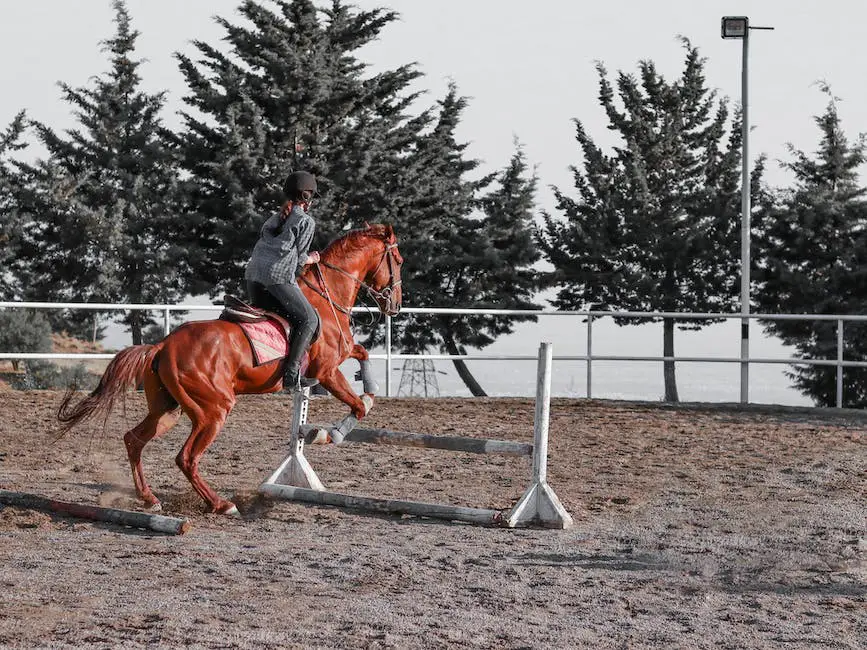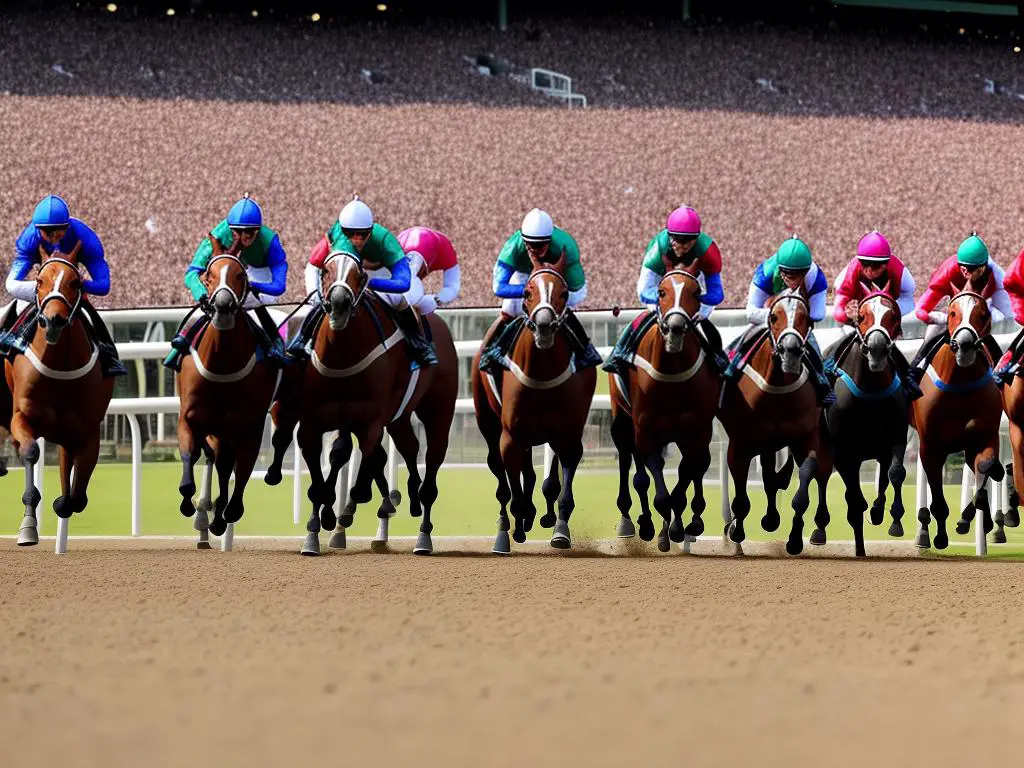The allure and charm of equine events have captured the heart of France for centuries, depicting a rich tale of tradition, passion, and economic significance. With roots tracing back to the early racing traditions, these prestigious horse races, notably the Prix de l’Arc de Triomphe, the French Derby, and the Grand Steeple-Chase, embody the grandeur of France’s equine sports culture. This narrative not only examines the historical evolution and importance of these glittering events but also unveils the intricate art of French horse breeding, thus charting the course to the present-day scenario. Furthermore, it showcases the immense impact of these events on the nation’s economy and explores their deep cultural resonance amongst the French populace.
Table of Contents (Horspedia)
The History of French Equine Events
Early French Equestrian History: The Gallic Foundation
Historically, the Gallo-Roman period marked the beginning of horse breeding and equestrian sport in France. The Gauls, known for their cavalry prowess, started breeding horses attuned to warfare that traversed Western Europe’s diverse terrain. The dominant influence of the Roman Empire under Caesar later led to the introduction of horse racing in the arena.
Knightly competitions known as jousts emerged in the medieval period, blending militaristic training with festive spectacle. France distinguished itself during these times as a hub for horse breeding, training knights’ warhorses, called “The Great Horses.”
Evolution of Racing: From Kings to Common Folks
By the early 16th Century, horse racing was firmly established as a favorite sport for French royalty, signaling the beginning of the “Sport of Kings,” with Kings Louis XIV and Louis XVI as patron sponsors. Yet, the sport also permeated French commoner communities, becoming an intrinsic element of French cultural life.
Racing in France wasn’t always confined to flat racing. Steeplechase racing, where horses also jump over obstacles, originated in Ireland but gained immense popularity in France by the 19th Century. This came about as French breeders began producing horses specifically for this sport, which led to France becoming a prominent player in the global steeplechase scene.
Pari-Mutuel Betting: Democratizing Punters’ Wins
France also revolutionized horse racing betting during the late 19th Century through Pari-Mutuel betting. Spearheaded by Joseph Oller, this system pooled all bets and divided the total among winners, eliminating bookmakers. Initially met with resistance, it ultimately democratized horse racing, leading to an expansion of equine events nationwide.
Introduction of Major Races: Testament to French Elegance
France introduced several prestigious races in the late 19th Century and early 20th Century to signal their equestrian prowess. The Grand Prix de Paris, launched in 1863, quickly gained fame as an ultimate test for three-year-old horses, akin to Britain’s Epsom Derby.
Prix de l’Arc de Triomphe, held annually at the Longchamp Racecourse in Paris, stands as one of the most prestigious horse races in the world. Inaugurated in 1920, it serves as a global convergence point for top-tier horses, jockeys, and trainers.
Conclusion: A Melding of Established Tradition and Ongoing Innovation
France’s equestrian history is characterized by a harmonious combination of enduring tradition and continuous innovation. From its ancient Gaul roots to the birth of contemporary horse racing, the French have left indelible marks on the equine sport. The creation and implementation of Pari-Mutuel betting, the breed of reputable racehorses, and the hosting of fierce races across the nation underscore France’s prominence in the global equestrian industry. This rich narrative guides today’s French horse events, cementing them as a cornerstone of national identity and pulling in spectators from around the world.

Prestigious French Horse Races
Prix de l’Arc de Triomphe: The Pinnacle of French Equestrian Competitions
Commonly known as the “Arc”, the Prix de l’Arc de Triomphe is among the most coveted horse racing events worldwide. Conducted annually on the first Sunday in October at the renowned Longchamp Racecourse in Paris, the Arc magnetizes elite thoroughbreds from different corners of the globe.
This Group 1 flat race, which first took place in 1920, spans a distance of 2,400 meters or roughly 1.5 miles, and is tailored for thoroughbreds aged three years and more. As it boasts a prize money of around 5 million euros, it stands as the world’s most prosperous horse race taking place on grass.
Over the years, the Arc has seen a slew of distinguished winners, but one that truly stands out is Treve, the remarkable mare who carved history by becoming the first-ever triple champion of the race (2013, 2014, 2015).
The French Derby: The Test of the Champions
Officially known as the Prix du Jockey Club, but more commonly referred to as the French Derby, this race is the premier event for three-year-old colts in France. Held annually in early June at the Chantilly Racecourse, it is a key event in the European racing calendar.
The French Derby is a Group 1 flat horserace covering a distance of 2,100 meters, slightly less than the traditional British Derby distance of 2,400 meters. This change was made in 2005 to further differentiate the race from the Prix de l’Arc de Triomphe later in the year.
The 2005 winner Shamardal is noteworthy for having prevailed in the first running of the ‘new’ French Derby. More recently, the 2018 winner Study of Man went on to make a name for himself in international racing.
The Grand Steeple-Chase of Paris: The Ultimate Challenge
The Grand Steeple-Chase of Paris, often referred to as the French Grand National, is perhaps the most challenging and prestigious jump race in France. It is held annually in late May at the Auteuil Hippodrome in Paris.
The race covers a distance of about 6,000 meters featuring 23 jumps, making it an ultimate test of endurance and jumping skill for horses aged five years and older.
One of the most accomplished horses in the history of the event is Katko, who won in 1988, 1989, and 1990. His three consecutive victories marked an incredible achievement in this demanding event.
France’s prestigious horse racing events boast historical significance, reflecting the highest achievement in horse athletics and equestrian culture. These races are not only significant events on the international horse racing calendar but also offer a captivating display for those in attendance.

The Art of French Horse Breeding
French Horse Breeding: A Grand Legacy
Renowned worldwide for its vibrant equestrian heritage, France has offered substantial contributions to equine sports through its thriving horse breeding tradition. French horse breeds, thanks to this distinguished lineage, have earned their stripes in various global equine events.
Noteworthy French Horse Breeds
Several French horse breeds have gained renown in various equine sports. The Thoroughbred, for example, is a breed known worldwide and is often associated with horse racing, eventing, and show jumping. Its prowess in these activities has made it one of the pillar breeds of French horse breeding.
The Selle Francais, another French breed, is also well-regarded, particularly in show jumping and eventing. This breed’s resilience, athleticism, and work ethic make it a popular choice for competitors in these events. Dressage enthusiasts often prefer the majestic French Trotter, a breed that combines strength, agility, and grace.
Other noteworthy French breeds include the Camargue, known for their unwavering endurance and frequently used in endurance racing, and the French anglo-arabian horse, appreciated for their speed and stamina in cross country events.
Breeding and Training for Competition
French horse breeders employ various methodologies for breeding horses destined for competition. Selection of suitable breeding stock is of paramount importance, as breeders aim to produce horses with the physical attributes and mental temperament required for success in equine sports.
This involves careful genetic selection, mating mares and stallions that exhibit the best characteristics of their respective breeds. In addition to physical attributes, breeders consider factors such as temperament, athleticism and health characteristics.
After birth, horses are selected for specific types of training based on their breed and individual temperament. Training a horse for competition is a lengthy process, often requiring years of work to mold a horse into a top-performing athlete.
For example, potential racehorses would undergo extensive speed and stamina training, while showjumping horses would be trained in agility, precision, and jumping techniques. Dressage horses, on the other hand, are schooled in a variety of movements and styles to create an elegant and harmonious performance.
French Equine Events: The Proving Ground
Famous French equine events like the Prix de l’Arc de Triomphe, a renowned thoroughbred flat race, serve as the proving ground for these meticulously bred and trained horses. Other prestigious events such as the Bordeaux International Show Jumping Competition and the Saumur Complet eventing competition showcase the talent and versatility of French bred horses to a global audience.
Decades of careful breeding and stringent selection processes have allowed France to shape the face of international horse sports. The French, known for their unwavering dedication to training and discipline, have mastered the art of creating high-caliber sport horses. This, alongside their rich history in horse rearing, has placed them firmly at the front of the pack in the global horse sports arena.

The Economic Impact of French Equine Events
Horses: Fueling France’s Economic Machine
The horse racing and breeding industries in France are among the most vibrant and thriving worldwide. Serving as an integral part of local entertainment, they also have a far-reaching economic impact. These industries not only provide jobs but also bring in international tourists, boosting the national economy in the process. Thus, they act as a fulcrum, powering France’s economic machine.
Scope of Employment
In the French equine industry, employment is abundant and diverse, spanning across a range of professional domains. From trainers, jockeys, breeders, to veterinarians, the sector provides job opportunities to the tune of tens of thousands. It provides direct employment for those working on stud farms and racecourses, indirect employment through associated businesses such as betting organizations, equestrian equipment companies, and feed industries, and induced employment due to consumer spending.
The French Institute of Horse and Riding reckons that in 2019, the sector produced more than 16.5 billion euros in economic benefits and created over 180,000 direct jobs.
Catalyst for Tourism
French equine events lure tourists from every corner of the world, eager to delve into the spectacle of these prestigious activities. Famous races such as the Prix de l’Arc de Triomphe and the Grand Steeple Chase de Paris are not just races, they are grand social events that attract horse racing enthusiasts and celebrities alike from around the globe.
According to a 2018 study by the French Horse and Riding Institute, nearly 6 million people attended horse racing events in France, contributing enormously to the local tourism industry. Beyond the racecourses, tourists also frequent stud farms, horse training centers, and equestrian museums, injecting further economic value into the tourism sector.
Boost to Local Economy
The local economies, particularly in regions like Normandy and Chantilly, witness tangible benefits from the equine industry. The stud farms and racecourses form a network of profitable businesses that fuel the local economies. Equine events stimulate the local hospitality industry, including hotels, restaurants, and transport services, providing an all-around boost to these areas.
Furthermore, the industry plays a crucial role in preserving rural employment and land-use patterns, ensuring the rural regions’ economic vitality.
Conclusion: The Lasting Economic Impact
The substantial economic influence stemming from French horse-related events indicates a sustained avenue for growth. Achieving a harmonious balance among animal welfare, economic advancement, and societal responsibility can support this traditionally prosperous sector, allowing it to prosper while contributing notably to the economy of France.
Whether it’s through creating job opportunities, attracting tourists, or enhancing local commercial activity, the economic alliance between the horse events and France has a deep and striking impact.

The Cultural Significance of French Equine Events
Horse Racing: A Quintessential French Tradition
Horse racing holds a long-lasting presence in French society and culture. Its history in France spans back centuries, particularly with enduring races like the Prix de l’Arc de Triomphe that carries a wealth of cultural relevance. Established in 1920, this annual event at the Longchamp Racecourse has become the wealthiest and most distinguished horse race seen throughout Europe. The race has played an influential role in French recreational activities, promoting horse racing wagers and encouraging a widespread intrigue in equine prowess and strategic racing.
With its refined onlookers, thrilling equestrian shows, and the dynamic buzz of the wagering arena, the Prix de l’Arc de Triomphe stages a compelling snapshot of French culture. This event extends far beyond hosting a simple horse race—it’s a cherished and honored tradition that illuminates the significance of the horse industry in France, reflecting the nation’s flair for elegance, competition, and celebration.
French Equestrian Events: Bringing History to Life
Equestrian events have also had a profound symbolic importance in French society. Perhaps no event embodies this historical symbolism more vividly than the Cadre Noir, an equestrian display of classical dressage based in Saumur in the Loire Valley. This event exhibits French military history and showcases rigorous classical riding techniques dating back to the 19th century. Held by the French National Riding School, these performances are a vibrant proclamation of France’s proud equestrian tradition.
The Cadre Noir is not just an equestrian event—it is a living pageant of French history. The riders’ formal uniforms, with their gold braiding and military adornments, reference France’s the past, the horses’ disciplined performances reflect a time-honored mastery of equine training, and the sheer spectacle of the event captures the country’s enduring love of pomp and showmanship.
Horse Shows and Fairs: The Heart of French Leisure
The Saut Hermès, an illustrious show jumping event that happens annually at the Grand Palais in Paris, is another crowning jewel in the French equestrian calendar. This event attracts the world’s leading show jumpers, resulting in thrilling displays of agility, precision, and speed. The Saut Hermès is an exhibition of modern sport, but its roots lie in traditional equestrian practices, further emphasizing the enduring relevance of horse-related activities in French society.
France also hosts equine fairs, such as the Fête du Cheval, where rural life is celebrated with horse processions, live music, and grand feasts. These fairs are joyful community events that offer everyone—from city dwellers to country folks—a taste of France’s rich rural heritage. They demonstrate the continuing presence of equine events in French leisure activities and their fundamental role in fostering communal bonds and traditions.
In conclusion, French equine events, whether they be grand horse races, historical equestrian displays, or rural horse fairs, hold a significant place in French society. They reflect France’s history, embody its cultural values, and continue to influence its leisure activities, remaining a central part of the French lifestyle.

From the thrill of the racecourse, the pedigree of horse breeding to the atmospheric excitement that these events bring, French equine events carry a formidable presence in France’s tapestry. Marking a significant chapter in the country’s history, these events are more than just a popular leisure activity; they are a symbol of national pride and a significant economic driving force. Framing the faces of winners past and the anticipation of future champions, these enduring traditions encapsulate the spirit of sporting excellence and cultural identity. The story of France’s equine events is ongoing, an unending race weaving into the very fabric of France’s future.